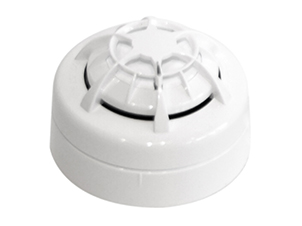Smoke switch
Effectively protected with the multisensor switch

New in use at WAGNER Rail is the multisensor switch. It is used for the selective monitoring of individual objects such as switch cabinets, containers, WC and wet rooms or general passenger areas and the driver's cab. What is special about the multisensor is that it can use two detection principles for fire detection depending on the situation. Like any optical smoke switch, the multisensor detects smoke particles at an early stage thanks to the scattered light principle. In addition, it reacts to temperature: if it goes up, the sensitivity of the smoke detection is increased. If the temperature rises by more than 20 Kelvin within five minutes, an alarm is automatically triggered.
Special algorithms also ensure that sensor signals are verified and deceptive signals filtered out in the multisensor switch. The sensor system is also monitored for contamination and compensated within a bandwidth.
- Universal smoke switch for early fire detection (smoke detection in accordance with EN 54-7)
- Simple and easy installation
- 360° visible status display for contamination, alarm,and fault
- Signal verification using algorithms to safeguard against deceptive signals
- Signals for alarm and fault are available separately (potential-free contacts)
- Simple and easy installation
- 360° visible status display for contamination, alarm, and fault
- Signal verification using algorithms to safeguard against deceptive signals
- Signals for alarm and fault are available separately (potential-free contacts)
- Reacts to rapid temperature increases independent of the initialtemperature
- Comfort of use and safety thanks to automatic adaptation to fire parameters for smoke and temperature
Functional principle
The monitoring of the fire parameters smoke and temperature is carried out according to the optical scattered light principle and thermal differential circuits with temperature difference and maximum evaluation. Alarms and fault messages are then forwarded to potential-free contacts.